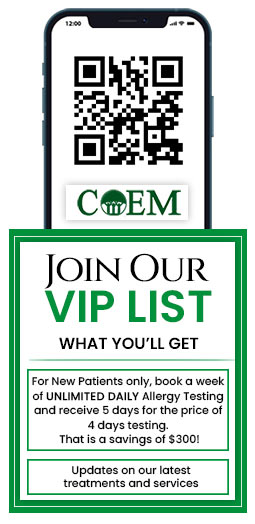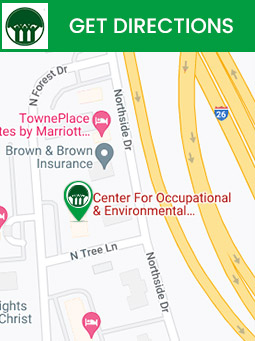Mold Exposure Health Risks: Can Mold Make You Sick?
Mold is a fungus that develops on humid or damp spots such as ventilation ducts, walls, shower cubicles, bathrooms, etc. You can identify mold growth either by smelling the musty, damp, or mildew odor or by observing signs such as water stains or discoloration on ceilings, floors, or walls in your house. Get specialized mold care at The Center for Occupational and Environmental Medicine (COEM). For more information, contact us today or schedule an appointment online. We are conveniently located at 7510 North Forest Drive North Charleston, SC 29420.


Table of Contents:
How can mold make you sick?
What are the symptoms of mold in your lungs?
Can mold make your lungs hurt?
Can mold grow inside your body?
How much mold exposure is harmful to your health?
How to fix your mold problem before it becomes toxic
Read more to learn how mold can make you sick and ways to prevent mold health risks.
Molds release harmful toxins into the surroundings. Inhaling these toxins can cause specific health problems. People with lung disease, weakened immune systems, allergies, or asthma have an increased risk of becoming sick from mold exposure.
If you are exposed to Aspergillus mold, you can develop a lung infection called Aspergillosis. Its symptoms range from mild to severe, depending on the type of aspergillosis. Pulmonary aspergillosis does not reveal any symptoms in the early stages. However, you may experience the following symptoms as the disease progresses:
• Difficulty breathing
• Coughing, sometimes accompanied by blood or mucus
• Chest pain
• Fever
• Wheezing
Invasive aspergillosis may cause these symptoms:
• Massive bleeding from the lungs or bloody cough
• Fever
• Liver or kidney failure
• Chills
• Shock
• Shortness of breath
Symptoms of allergic bronchopulmonary aspergillosis may include:
• Exercise-induced asthma or inability to tolerate exercise
• Coughing accompanied by blood or mucus
• Increased sputum or mucus secretions
• Wheezing or worsening of asthma
• Fever
Also Read – Can Black Mold Exposure Cause Headaches?
If mold spores become lodged in the mucus membranes of the lungs and sinuses, they can lead to bleeding or a burning sensation. Also, molds can cause a rare lung inflammatory disease called hypersensitivity pneumonitis. You may develop this health risk after being exposed to mold at work or home.
You can develop a harmful fungal infection called Histoplasmosis if you inhale the fungus. Histoplasma capsulatum. This fungus grows as yeast after it enters the human body. It is usually found in subtropical climates and soil-rich surfaces. Therefore, landscapers and farmers have an increased risk of developing this fungal infection.
Not everyone reacts the same way to mold exposure. The tolerance level to the harmful effects of mold exposure can vary depending on an individual’s immune system and age. Infants and young children may be at a higher risk of mold toxicity.
Here are some tips to minimize your mold health risks:
• Use a dehumidifier to keep humidity levels as low as possible and check the humidity levels at least once a day.
• Use mold-remover cleaning products.
• Do not use carpets in bathrooms and bedrooms.
• Make sure your home is completely ventilated.
• Use fortified mold inhibitor paints.
• Restore or repair roof gutters, as leaky roofs can encourage mold growth.
Contact Us today to learn more about mold health risks and how you can avoid them. We are conveniently located at 7510 North Forest Drive North Charleston, SC 29420. We serve patients from Charleston SC, Mount Pleasant SC, Summerville SC, North Charleston SC, Goose Creek SC, Ladson SC, Hanahan SC, James Island SC, John’s Island SC, Daniel Island SC, West Ashley SC, Moncks Corner SC, Sullivans Island SC, Folly Beach SC, Isle of Palms SC and all of South Carolina, Nationally, and Internationally. Patients routinely fly into Charleston to be evaluated by COEM and to enjoy this beautiful city, which is a Condé Nast and Travel and Leisure Top Domestic and International Tourist Destination.










